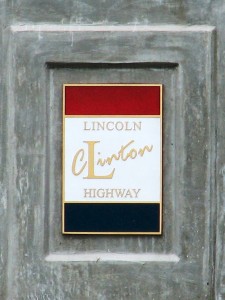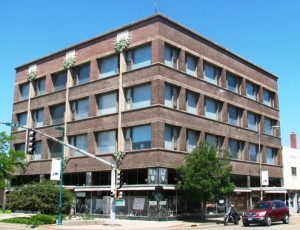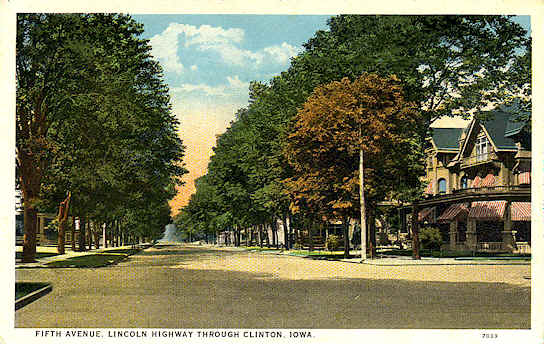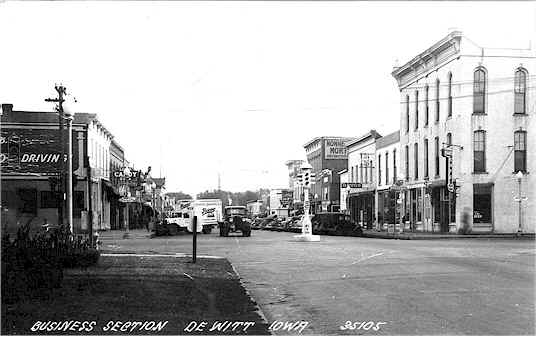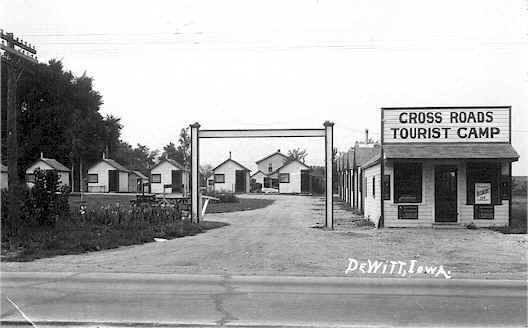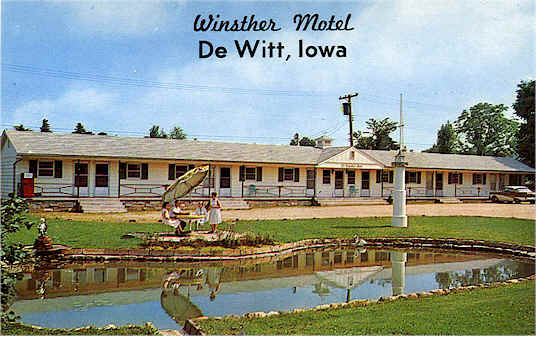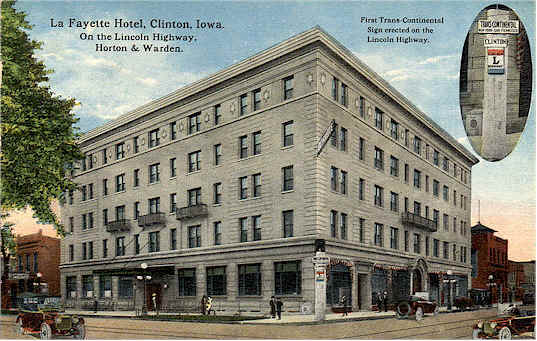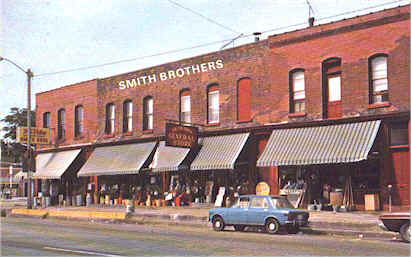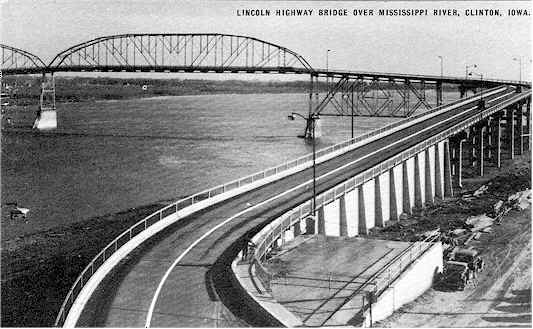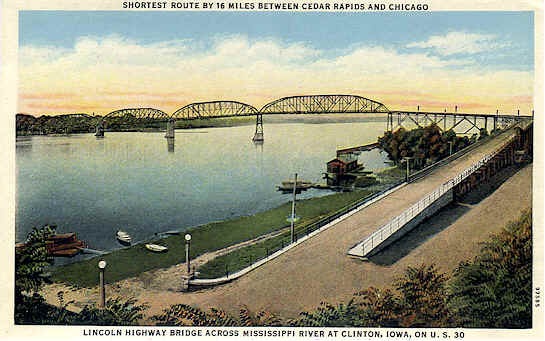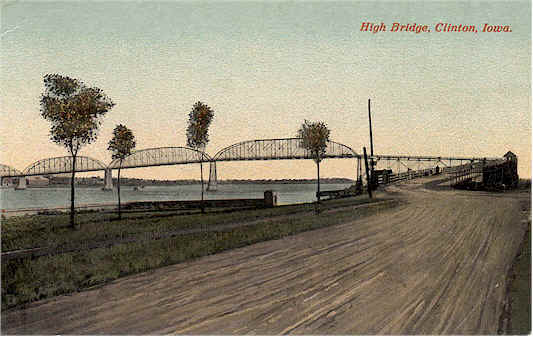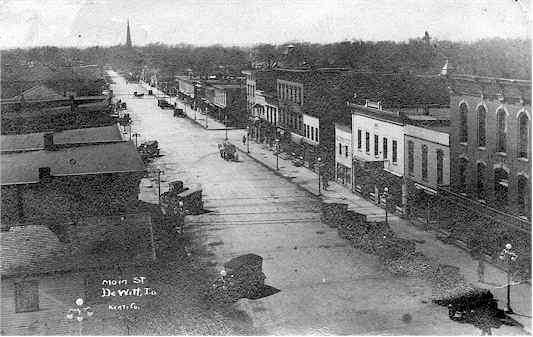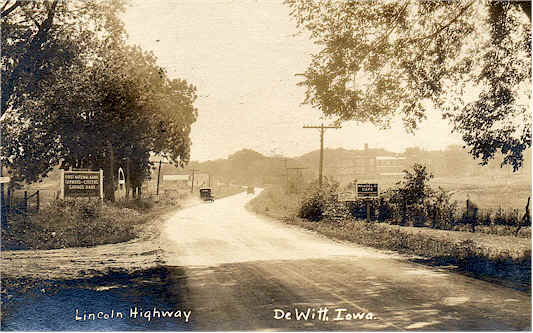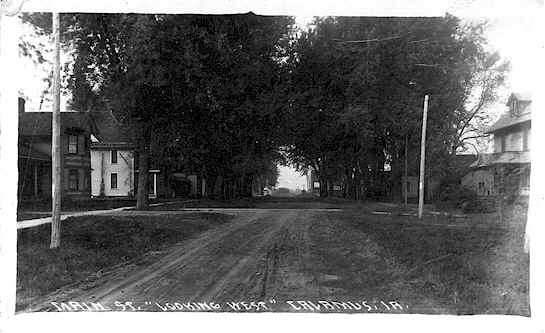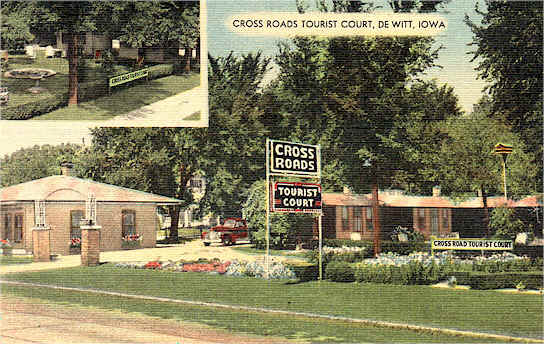Clinton
Clinton County
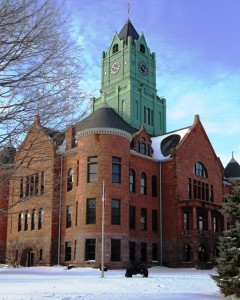
In 1878 and again in 1897, new courthouses were built. Building was often delayed due to problems with quicksand. © Michael Kelly
On January 11, 1840 a special act approved by the territorial legislature allowed the County of Clinton to be organized. In March of 1840, the town of Camanche was selected as the county seat. By 1841 the legislature passed another act and the county seat was moved to the town of Vandenburg which was on government land. The County commissioners borrowed $200,000 and sent the sheriff to Dubuque to purchase the land. A 20×32 courthouse was constructed in Vandenburg. The town, according to legend, was named for the family name of the sweetheart of Commissioner Warren. In 1841-42, on petition, the legislature changed the name of Vandenburg to DeWitt to further honor the name of DeWitt Clinton, after whom the county was named. The Honorable DeWitt Clinton had been the governor of New York and was the driving force behind the Erie Canal.
In 1853, a new two-story brick courthouse was built for $5,900. During the next few years, the population increased along the Mississippi River faster than in the interior of the county and a new county seat location was considered. Possible locations were Ringwood (a piece of open land and duck ponds between Lyons and Clinton, Elvira, and DeWitt Park. A heated contest between Lyons (established in 1835) and Clinton ensued until voting day and Clinton won out. Clinton had been laid out in 1855 on the old site of New York (platted in 1836) and in 1869 it became the new county seat. In just twenty three days, a new courthouse was built. (Present day Clinton includes the town of Lyon – which was directly to the north.)
There was talk of bringing the bell from the tower at the DeWitt Courthouse to Clinton when the county records were being moved. But in a midnight raid, some DeWitt citizens took the bell from the tower and buried it in Elmwood Cemetery. When a bell was needed for the Christian Chapel (now Grace Evangelical Lutheran Church), the same citizens made a second midnight visit to the cemetery. On the day of the church dedication, the old courthouse bell rang out!
In 1878 and again in 1897, new courthouses were built. Building was often delayed due to problems with quicksand. Granite and red Indian Pipestone were brought from Minnesota and the Romanesque style courthouse was completed with a large central tower of copper, now weathered green.
Clinton County and the Lincoln Highway
“…the Fulton and Lyons Bridge was anything but safe. It was completed in 1891- four steel trusses anchored to stone and steel pylons sunk in the bed of the Mississippi River. The approaches rose from grade and, when the first of the spans reached, the floor suddenly flattened out. Approaching vehicles were out of sight until a few yards before arriving at the first span….. Adding to the misery of drivers heading west, there was a sharp right turn over the west bank onto a ramp two blocks long. In later years this ramp passed the toll station before turning away from the levee….. All traces of the bridge on the Iowa side are now gone.” (The Lincoln Highway by Gregory M. Franzwa)
A 1919 army truck convoy tested the first transcontinental highway from Gettysburg to San Francisco. Eighty vehicles with 300 officers and men crossed the Mississippi on the Lyons and Fulton Bridge, much to the delight of the citizens of Clinton. The future President Dwight Eisenhower was a part of this convoy and it is believed that this trip put the seed in his mind for the interstate highway system. The Lincoln Highway was an economic boost to the town as one local newspaper counted 400 automobiles passed the Court House during one hour in one evening. In 1924, the ten millionth Ford entered Iowa amid bands playing and prominent visitors from Cedar Rapids came to Clinton to escorting the famous car to their city.
A lot of the Lincoln Highway was gravel in the early days. In 1923, thirty eight miles was paved with concrete from Clinton west to Lowden. Over the years, the route changed a bit once it left the bridge. Where US 30 and US 67 part, there is a brick pillar with a limestone capstone with a red/white/blue logo and a plaque honoring W.F. Coan. He was the initial consul of the Lincoln Highway Association for the state of Iowa.
Rivers and Railroad
The first train crossed from the Illinois shore to Little Rock Island at noon, January 9, 1860 and was ferried from there to the Iowa shore. In 1864, construction on the span from Little Rock Island to the Iowa shore was begun and it was completed on January 6, 1865. The original single track was replaced by a double track in 1909. The first Fulton-Lyons Bridge was built in 1891 and was replaced by the Mark N. Morris Memorial Bridge in 1975. (Fulton is on the Illinois side of the Mississippi.)The Clinton High Bridge was constructed in 1892 and replaced by the Gateway Bridge in 1956. The construction of the Gateway Bridge was begun in 1954 and opened in 1956.
In 1858 a railroad, called the Chicago, Iowa and Nebraska was built between Clinton and Clarence and it was later renamed the Chicago Northwestern Railroad. The city of Camanche was nearly destroyed by a tornado in 1860 and much to their disappointment; they were not considered a good location for the railroad. The rail lines were laid by the small towns of Grand Mound, Clarence, and Lowden. Small towns were either started or built up by the railroad as engines had to stop every 10-15 miles for water and coal.
Between 1850 -1900 the cities of Lyons and Clinton became the center of the lumber industry and were regarded as the “Lumber Capitol of the World”. Huge log rafts floated down the river from Wisconsin and Minnesota to have the logs cut into lumber in Clinton and then shipped to growing communities by river and rail. In 1880-90, Clinton boasted of 13 resident millionaires – more millionaires per capita than any other town or city in the nation. These wealthy citizens had personal watercraft on which they would host parties complete with music, food, and drink. A typical saw mill employed 300 men and boys who worked 10 hour days, 6 days a week. Clinton and Lyons hosted 3 steamboats a day or 1200 per year.
By 1900, the northern forests were depleted, saw mills were closed, and the age of opulence ended. But the river and rails were still very economical transportation for goods going all directions. The city of Clinton still has many of the early Victorian mansions, like the Curtis Mansion, which is home to the Clinton Women’s Club.
As some of the oldest Mississippi River communities, Clinton County has 23 pioneer cemeteries- a testament to the trials of the early settlers heading west.
Towns Along the Lincoln Highway in Clinton County
The city sits on a 60 acre park-like bank of the Mississippi River. Clinton is home to a Class 1-A baseball team, the Discovery Recreational Trail, and an RV park. It also has a band shell, theater productions on a renovated paddlewheel boat, and a historical museum.
City of Low Moor
Low Moor was incorporated in 1859 along the Chicago Northwestern Railroad line. It received its name after someone noticed the name “Low Moor” was stamped into the iron rails. The rails were made in Low Moor, England- known for its extensive ironworks.
City of Malone
It is an unincorporated community. Malone Park is a 30 acre park with a 9 acre lake. The facilities can be used for fishing, swimming, picnicking, or disk golf.
DeWitt is at the intersection of the Lincoln Highway and the Blues Highway (#61) at 10th Street and 6th Avenue. The community has an 1878 Opera House, Central Community Historical Museum, and a 1727 German Hausbarn, originally from Schleswig-Holstein in central Germany and reassembled in DeWitt in 2008.
John Bloom is a famous artist born in DeWitt. He was part of Grant Wood’s Stone City Art Colony in 1932-33. He did paintings, sketches, carvings, and created lithographs.
DeWitt has an event every Tuesday from June through August called Tunes in Town. It consists of local bands playing and local restaurants serving food from 6-8 pm in Lincoln Park, which is between two alignments of the Lincoln Highway. The Hausbarn is also open during that time for touring.
Grand Mound was platted in 1860, re-platted in 1865, and incorporated 1876. Legend says it was named for a nearby Sand Mound, but the recording error was never corrected and the name remained “Grand” instead of “Sand”. The community holds a Steam Threshers Show and a Car Show every July. Grand Mound also hosts the largest fireworks display in the state of Iowa on the Fourth of July every year (this is for a single town—other large displays are combined communities). It’s well worth a trip.
City of Calamus
Calamus was named for the Calamus Creek, as they could think of no other name. The creek was named for the plant that grows on its banks. The botanical name is Acorus calamus, or commonly called Sweet Flag or just Calamus. In 1858, the land was rather swampy so the Post Office and Railroad Station were moved to a more favorable location to the present- day city of Calamus.
Wheatland was platted in 1858 and named for President Buchanan’s estate, Wheatland, in Lancaster, PA. A significant amount of settlers came to this community from Wunderthausen, in central Germany. They built a Presbyterian church here in 1857 and the town was incorporated in 1869. They also host an annual car show every year in August.
Attractions
- Bickelhaupt Arboretum is a nationally recognized 14 acre outdoor museum of trees, shrubs, ground covers, perennials, and annuals. The site also has a Monarch butterfly watch station, bird haven and herb garden. Located at 340 South 14th Street.
- The Lincoln Hotel is a Lincoln Highway building in Lowden, which is unchanged externally from when it was built and worth a look. The hotel is currently for sale as it’s current owners are looking to retire. If you are interested in purchasing the hotel or would like more information please call Elizabeth Norton at 563-941-7563.
- Clinton Area Showboat Theatre runs June thru mid-August with a professional summer repertory theatre performing musicals and comedies on a restored old river paddle boat. On Saturdays during the summer, a Theatre for Children is offered. Address is 303 Riverview Road. Phone 563-242-6760 for show times and prices.
- Eagle Point Park has a 1937 rustic lodge and panoramic view of the Mississippi River including the Lock and Dam #13. Watch boats go in and out of the Lock and Dam as they travel the Mississippi River. The annual migration of eagles can be viewed from the glass windows of the lodge. Located at 4101 North 3rd Street.
- Felix Adler Children’s Discovery Center is named for the world famous clown and Clinton native, Felix Adler. It has 20 permanent and traveling interactive exhibits that both children and adults will enjoy including a KAPLA Block Corner and Brio Train Engine. Felix Adler Days are held in June, complete with a circus. Located in downtown Clinton at 332 8th Ave South.
- The Sawmill Museum showcases the life of a lumberjack, life in a lumber camp, how a sawmill turns logs into lumber, how the lumber is then turned into decorative trims, doors, and flooring. Clinton was known as the Lumber Capitol of the world and created many millionaires in it’s community.
- The Annual Lumberjack Festival is held in June with world class competitors showing off their lumberjack skills. The Museum is located at 2231 Grant St, in the Lyons District.
- Walking Tour: Start at Clinton County Museum and go to Lafayette Hotel, Moeszinger-Marwuis (Armstrong) Building, Carnegie Library
For details of buildings and their addresses click HERE.
Check out the Clinton County Convention and Visitors Bureau for much more information on attractions, events, recreational opportunities, and dining.
Other towns in Clinton County
- Elwood
- Lost Nation
- Toronto
- Delmar
- Welton
- Elvira
- Camanche
- Folletts
- Goose Lake
- Bryant
- Leeds Grove
- Andover

